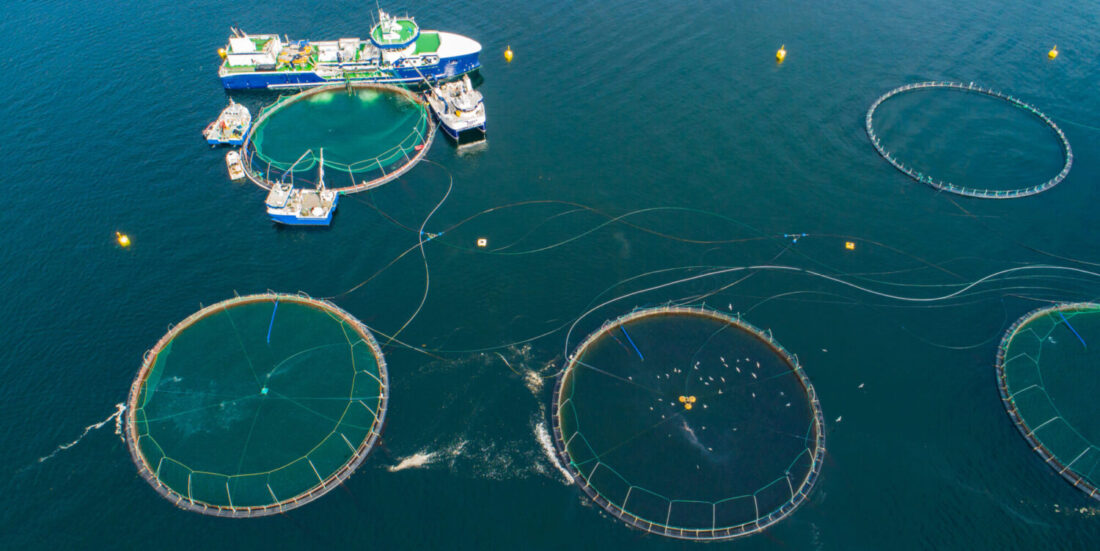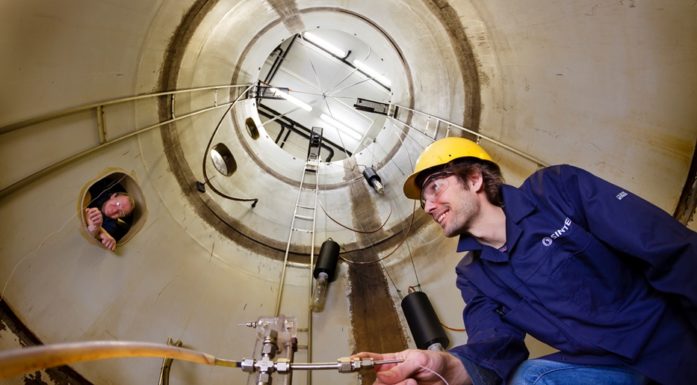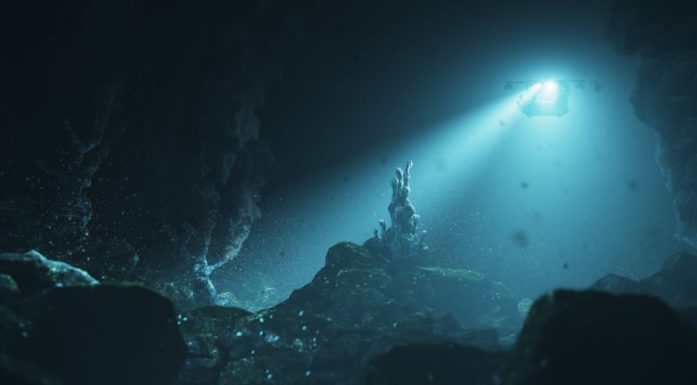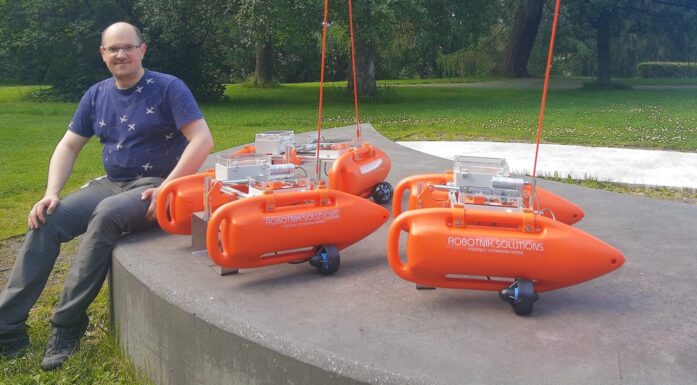Fish farming: this new vessel concept will assist open ocean aquaculture
The aim is to extract the most efficient performance from all the various vessels utilised by the aquaculture sector at facilities exposed to rough seas and strong currents. Researchers have been looking into all aspects of this issue.
Researchers have been studying how various kinds of vessels operate in the vicinity of facilities exposed to high waves and strong currents. They have been evaluating how weather conditions impact on operations and vessel logistics. Activities in the aquaculture sector represent an important part of day-to-day operations for many vessels. The studies have been carried out at the research centre ‘SFI Exposed’, which is being headed by SINTEF.
Out on the facilities, there are the so-called feed barges that operate close to the net pens. A net pen is a circular, floating ring from which a net is suspended that encloses the farmed fish.
Different vessels for different jobs
From the feed barge, where fish feeding operations are managed from a control room, work vessels make daily trips out to the pens. Fish farm workers have to make trips to inspect the facility and remove the bodies of fish that have died of disease or from other causes.
Facilities also require service vessels of different sizes, some equipped with cranes to assist in repair work, as well as lifting and unloading operations. Vessels are also needed when delousing procedures are carried out. So-called well boats are used for transporting living fish, whether as smolt for transfer into the pens, or for the removal to land of mature fish that are ready for slaughter. Well boats are also used in connection with delousing.
So-called processing vessels are used for the on-board slaughter of mature fish. This enables fish destined for processing facilities on land to be packed more densely than if they were transported alive in the tank of a well boat.
So-called silage vessels make regular visits to facilities to remove dead fish, and dedicated supply vessels deliver feed to the barges, which then distribute the feed out into the pens.
Faster vessels are also used to support diving operations and to transport personnel to and from the facilities.
Planning is worth its weight in gold
“An assessment of all these vessels, their uses and their limitations, forms a key part of the knowledge base we need to develop proposals for new vessel concepts”, says Eivind Lona.
Lona is a research scientist at SINTEF Ocean.
The development of new concepts represents just one aspect of research and innovation. Another is to improve the way we exploit what already exists.
At the research centre SFI Exposed, scientists have been studying vessel operations in the open ocean aquaculture sector with an emphasis on logistics optimisation and how weather conditions impact on a vessel fleet’s operational logistics.
Researcher Hans Tobias Slette has been using scale models to help simulate how a given fleet of vessels serves a group of aquaculture facilities under different weather conditions.

Researchers use models to simulate a variety of situations arising at aquaculture facilities. (Photo: Eivind Lona, SINTEF)
Model simulations are also used to assess how effectively a fleet of vessels can respond to events such as the mass death of a facility’s fish population.
“Vessels used in open ocean aquaculture carry large amounts of equipment. They are expensive and demand efficient utilisation”, emphasises Eivind Lona.
The precise planning of how a given fleet can serve given locations may be worth its weight in gold.
We need bigger vessels
For many years, a so-called ‘15-metre limit’ has governed vessel construction regulations and the qualifications requirements for skippers of vessels that are more than 15 metres in length.
After this limit was rescinded, vessel fleets began to exhibit greater variation in boat lengths. Vessels are no longer restricted to hull lengths of 14.99 metres but can be built with dimensions that are fit for purpose.
“The range of equipment carried by vessels in the aquaculture sector is growing”, says Lona. “Nets are becoming larger, and anchors heavier. We need bigger vessels to handle all this equipment, and we believe that bigger boats will be positive for safety”, he says.
He goes on to say that some of the 14.99-metre vessels ended up being almost as wide as they were long.
Looking into vessel design
“Some vessels may function very well under quiet mooring conditions alongside the net pens but may be entirely unsuited for transport across stretches of open ocean or for heavy lifting operations”, says Ørjan Selvik.
Selvik is a Senior Advisor at SINTEF Ocean and, together with his colleagues, has been looking into how vessel design work should be carried out in order to ensure that the aquaculture sector has the fleet that will meet its future needs.
When the SFI Exposed centre held its concluding conference in March, Selvik presented what is called a ‘design spiral’ for vessel construction. This approach both safeguards and highlights the key connection between vessel design and in-built safety features for both fish and personnel.

Ørjan Selvik has been looking into how design work should be carried out in order to ensure that the aquaculture sector secures the fleet that will meet its future needs. Photo: SINTEF
“During the research term allotted to the SFI Exposed centre, we had pictured ourselves presenting a series of tailored vessel designs”, says Lona. “However, after eight years, we can say unequivocally that specific product development has to be the stuff of individual projects”, he says.
Selvik explains that the reason for this is that project partners involved in centres such as SFI Exposed want to protect their own ideas and the competitive advantages that these offer.
He emphasises that for this reason it has become important to identify aspects of common interest on which all partners find it natural to collaborate. These may include issues such as knowledge bases and computational models that can be used as a basis for design.
Calculating the forces that vessels are subject to
Researchers at SINTEF Ocean have developed a model that enables them to calculate the forces acting between vessels and net pens much more precisely than before.
“We have previously developed software for calculating the forces that act on larger constructions such as ships and oil platforms”, says Lona.
Another type of software can be applied to pipelines and other slender and flexible constructions.
“We have now utilised the best from two worlds and linked them together to achieve an advanced development that offers more precise answers to the aquaculture sector”, he says.
These results can be used to help identify exactly what forces various types of equipment can withstand, and to establish criteria for whether or not an operation can be carried out. They can also be used to calculate how weather conditions influence different vessels’ abilities to perform given operations.
In exposed locations at sea, and on facilities that carry major items of equipment and large volumes of fish, decisions based solely on experience will not be adequate.
Researchers believe that research-based knowledge is essential for the planning of risk, contingency and operations in the aquaculture sector.
References:
Ingeborg Margrete Lianes et al.: The aquaculture service vessel routing problem with time dependent travel times and synchronization constraints. Computers & Operations Research, 2021. Executive summary.
Hans Tobias Slette et al.: Effective utilization of service vessels in fish farming: fleet design considering the characteristics of the locations. Aquacult Int, 2023.
Hans Tobias Slette et al.: Simulating emergency response for large-scale fish welfare emergencies in sea-based salmon farming. Aquacultural Engineering, 2022.






